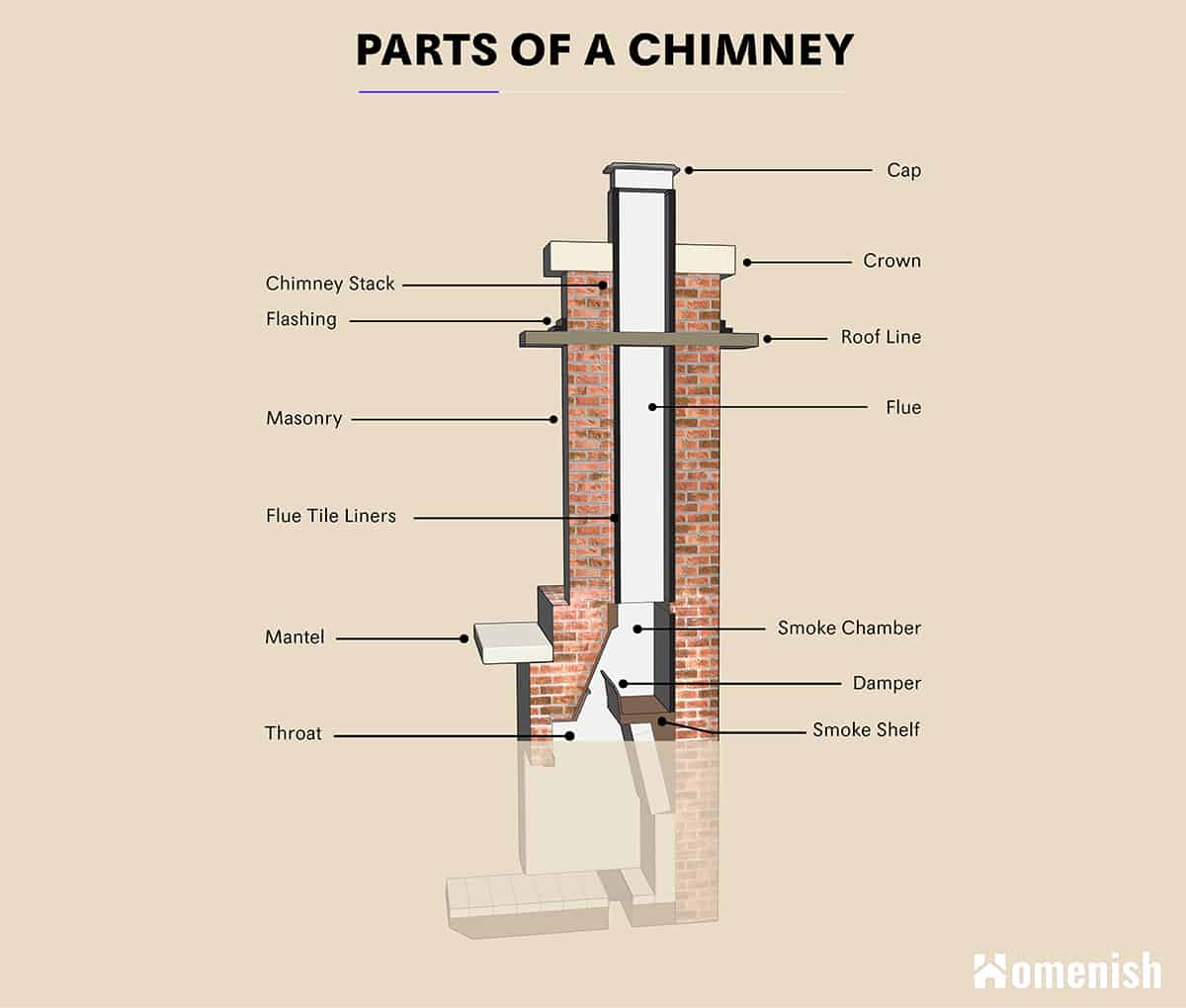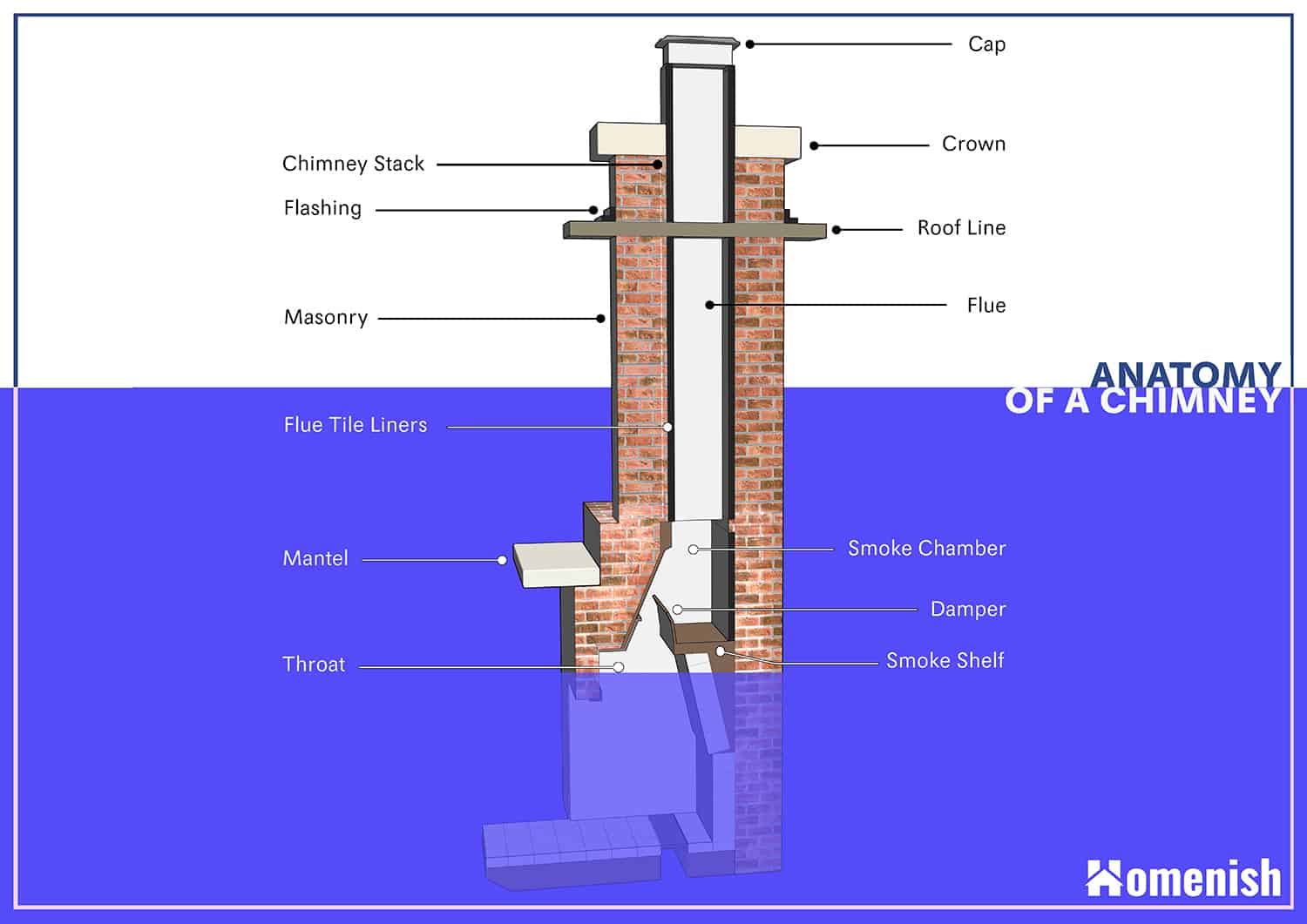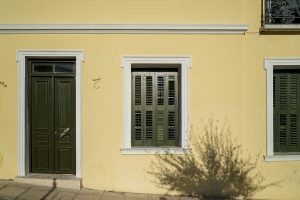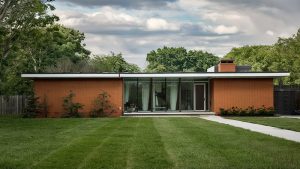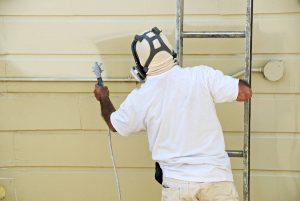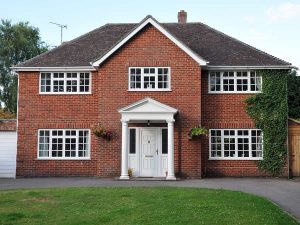A chimney is a device that is used to evacuate smoke from a fireplace or furnace. A draft is often created and maintained by a chimney, which provides air to the fire. A fireplace is made up of many components that must work together for you to experience its advantages comfortably. The chimney liner, which goes through your chimney and enables toxic gases and heat from a fire to be easily transferred outside the house, is one of the most important components.
You wouldn’t believe anything was going on in chimneys if you just looked at it. However, there’s more to it than meets the eye. Chimneys may seem simple, but they’re very complex devices that use a variety of physics and mathematics to accomplish a single task: safely channeling smoke from a furnace to the outside.
Knowing a bit about your chimney and its different parts is critical because any component that is worn out, destroyed, or otherwise corrupted will lead to severe problems ranging from defective service to a disastrous house fire.
Here is the chimney and all of its parts illustrated by a 3D diagram.
The Chimney Liner
Chimney liners secure mortar joints and bricks on the inside of the chimney, make cleaning easier, and improve the overall chimney efficiency. Liners made of aluminum and stainless steel were imported and assembled. On the inside of the chimney, cast-in-place and Terra-Cotta liners are hand-built.
The chimney liner can keep your house safe by allowing heat from a fire to escape without spreading to nearby flammable materials. Unlined chimneys will allow heat to pass easily through your home’s flammable materials, potentially causing a fire.
A masonry chimney liner is intended to shield it from the corrosive residues generated by a fire. If these gases are permitted to infiltrate the brick and mortar, they can cause damage to the structure of the chimney, reducing its life span and structural integrity. The acidic gases produced by fires will eat away at the mortar joints, allowing dangerous heat to enter the house. When the mortar deteriorates enough, toxic gases like carbon monoxide will make their way into your house.
A chimney liner would also give you a flue that is the right size for your chimney and furnace to work at their best. The chimney liner helps the byproducts of fires to climb and comfortably exit your home through the chimney. The liner allows for air to flow in for fire ignition by providing the correct air mass.
Liners come in various forms; Clay tiles, metal, and cast-in-place chimney liners are the three most common types.
Clay Tiles Chimney Liner: Clay tiles are amongst the most widely used materials for chimney liners. If properly treated, clay tiles are cheap, easy to maintain and provide a decent value.
Metal Chimney Liner: When upgrading or replacing an existing chimney, metal liners made of stainless steel or aluminum are a safe option. They are exceptionally stable and long-lasting when professionally mounted. When this form of lining is used, an extra coating is usually used to keep the high temperatures from a fire contained.
Cast-in-Place Chimney Liner: A cast liner is a lightweight, sealed device that is mounted within a chimney to provide a clear, streamlined path for flue gasses to comfortably exit your house.
The Chimney Crown
The crown, which fits above the chimney and protects the bricks and mortar from water damage, is a strong, slightly slanted framework. Chimneys that have not been correctly crowned are prone to collapse over time.
The Chimney Cap
The chimney cap is a part of the chimney, which is also located on top of the chimney and functions to keep rainwater and debris out of reach to the building. The wire mesh parts of the chimney allow smoke to escape while keeping burning particles within the chimney.
The Chimney Flue
This is simply the chimney’s discharge device, the medium or stream that pulls fumes from the furnace and disperses it into the atmosphere. Metal chimneys have only one flue, while brick chimneys can have several flues.
The Chimney Stack
The smoke from a furnace is carried through the roof and into the air by the chimney stack. There is a long tube that guarantees smoke is pumped up from the room and out the window. A masonry or steel structure is commonly used to support it above the roof. After combustion in the engine, it functions similarly to a car’s exhaust pipe. The height of the stack can probably depend on the roof’s configuration. When a roof is flat or low-pitched, the stack is normally lower than when the roof is highly pitched.
Smoke should be able to escape from the chimney stack’s outlets. Waterproofing the conjunction between it and the roof is needed. This is done to keep rainwater and moisture out of the apartment. The flue construction should be able to bond with the roofing materials. If this is not achieved, water can seep into the ceiling and cause damage. The dampness will affect the finishes, which can cause additional damage to the walls and floors. Masonry components are used in the new building of chimney flues.
The Chimney Flashing
The chimney flashing is the component that closes the void between both the roof and the chimney’s exterior. Flashing is an important component of the chimney since it stops rainfall or falling snow from penetrating the building. Copper, aluminum, lead, or galvanized steel are popular materials for flashing.
The Chimney Damper
The damper is a mechanism at the base of the chimney that can be sealed tight while the furnace is not in service but stays open when there is a fire burning. In the summer, a locked damper traps cool air inside of the house and keeps freezing winter air out. This also keeps animals out of the building whenever they get through the chimney.
The use of a damper has the advantage of preventing heat loss. While a fireplace with a fire blazing is attractive, and the sound of crackling wood can be soothing, you prefer the heat to stay inside the house rather than flutter outside to chill the beautiful scenery. The heat circulates downward while the damper is partly closed, remaining in your home for warmth that cannot be balanced by gas or electric heating systems. It also lets you save a huge amount of money on your heating costs as an additional bonus.
The Smoke Shelf
The smoke shelf, which is located right below the damper, helps by trapping debris and moisture and aids in the movement of fumes through the chimney.
The Throat
The throat is the part of a chimney where fire passes in right above the firebox and just below the damper.
